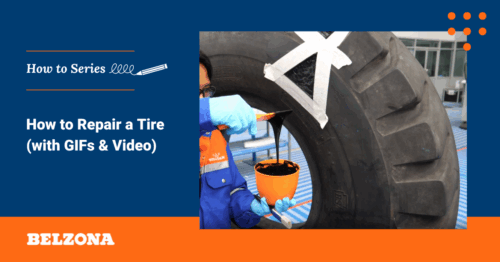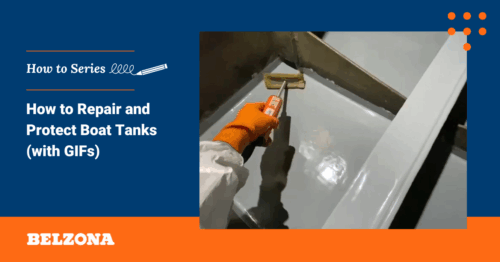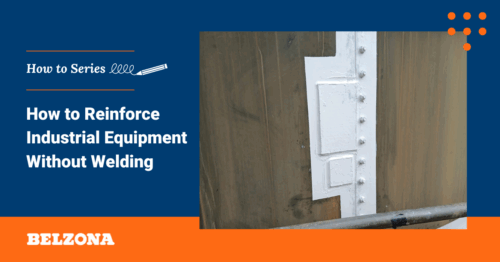This blog post provides step-by-step guidance on how to repair and protect sea water pumps using the epoxy paste, Belzona 1111 (Super Metal) and anti-corrosion coating, Belzona 1341 (Supermetalglide).
Sea water pumps are essential for various marine operations, including cooling, ballast systems and fire suppression. However, exposure to saltwater accelerates corrosion and erosion, leading to an increased rate of wear. In turn, this can result in frequent pump repair and inefficiencies.
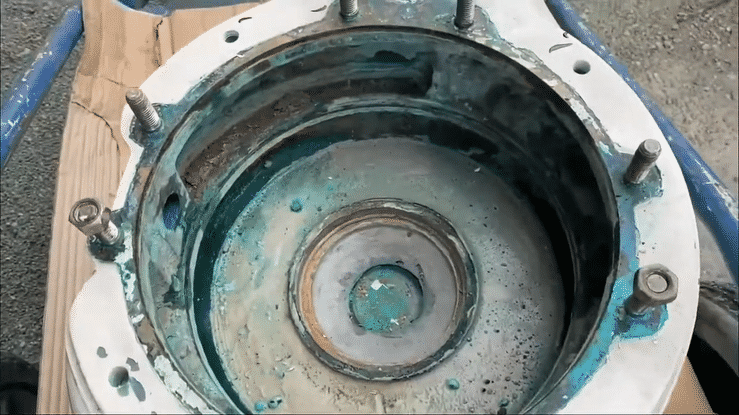
Corroded sea water pump prior to application of Belzona 1111 (Super Metal) and Belzona 1341 (Supermetalglide)
Belzona Solutions:
- Belzona 1111 (Super Metal): A high-strength metal repair composite ideal for rebuilding and resurfacing corroded substrates.
- Belzona 1341 (Supermetalglide): A high-performance hydrophobic coating that enhances efficiency, enabling asset owners to make significant financial savings.
How to Repair and Protect Sea Water Pumps: A Step-by-Step Guide
Step One: Mix and Apply Belzona 1111 (Super Metal)
Prior to the application of composite repair system, Belzona 1111 (Super Metal), grit blast the substrate to the requirements of SSPC SP 10 or ISO 8501- SA 2 ½ cleanliness, with a minimum average 75 µm (3 mils) profile.
Once the surface preparation is complete, mix the base and solidifier together using a spatula. Use a mixing ratio of 3:1 parts base to solidifier, by volume, and 5:1 parts base to solidifier, by weight.
Apply Belzona 1111 (Super Metal) directly onto the prepared surface using the Belzona applicator or short-bristled brush to fill all cracks, remove entrapped air and ensure maximum contact with the surface.
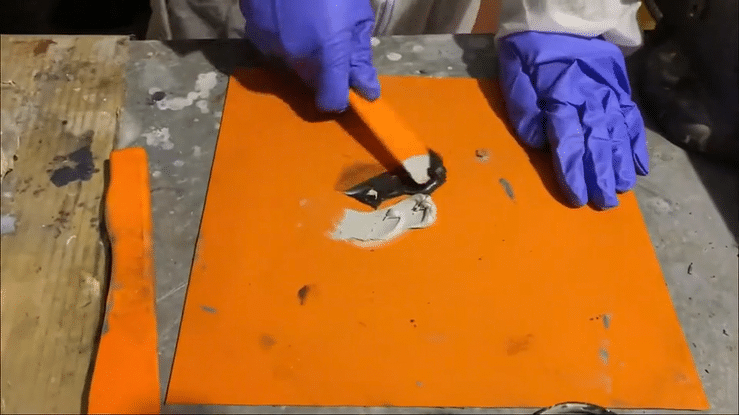
Step Two: Application of Belzona 1341 (Supermetalglide)
Once the Belzona 1111 (Super Metal) has cured, mix together the base and solidifier of the high-performance coating, Belzona 1341 (Supermetalglide). Use a mixing ratio of 1:1 parts base to solidifier, by volume, and 100:70 parts base to solidifier, by weight.
Once the system has been thoroughly mixed together, use a short-bristled brush to apply the first coat to the sea water pump.
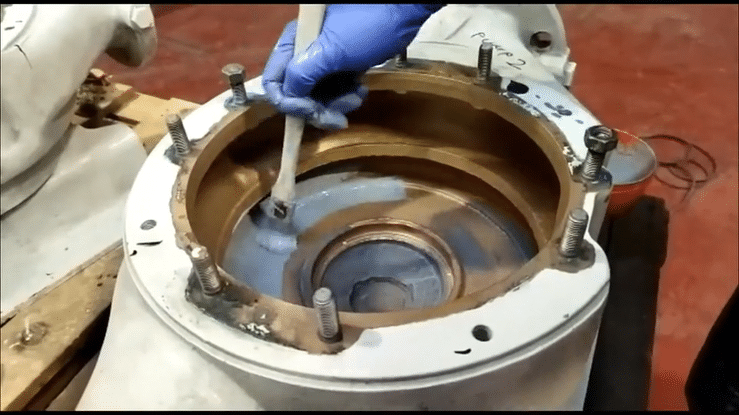
Step Three: Apply Second Coat of Belzona 1341 (Supermetalglide)
As soon as possible after the application of the first coat, apply the second coat Belzona 1341 (Supermetalglide). Leave to cure for the appropriate amount of time stated in the Instructions for Use document.
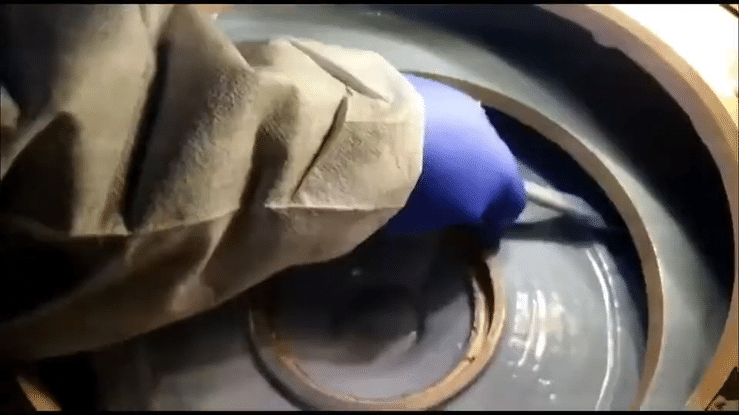
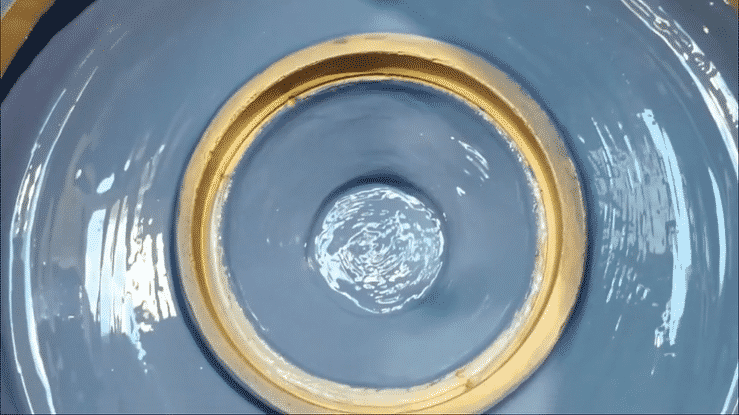
Global Marine Approvals
Belzona polymeric repair and protection systems for the marine industry have gained the following global marine approvals:
Lloyd’s Register
American Bureau of Shipping
Bureau Veritas
RINA Services
DNV
China Classification Society
Korean Register of Shipping
Frequently Asked Questions
What is cavitation in a pump?
Pump cavitation happens when the local pressure inside a pump falls below the liquid’s vapor pressure. This pressure drop causes the formation of tiny vapor bubbles – typically around the pump impeller or inlet areas. As these bubbles move into regions of higher pressure, they suddenly collapse, generating intense shock waves that physically erode metal surfaces. Belzona offers targeted solutions to repair and protect pump components from cavitation:
Belzona 1111 (Super Metal): This is an epoxy paste that can rebuild damaged metal areas, restoring the pump’s original profile prior to application of a Belzona coating.
Belzona 2141 (ACR‑Fluid Elastomer): This is a flexible, cold-applied polyurethane elastomer designed for ultra-high-velocity and cavitation-prone areas. It provides exceptional abrasion and cavitation resistance, with proven performance at water velocities up to 115 knots.
How does a water pump work?
A water pump functions by creating a pressure difference that moves water from one location to another. Most common are:
1. Centrifugal Pumps
A motor spins an impeller and the curved vanes fling water outward via a centrifugal force. This rapidly spinning motion generates low pressure at the centre (eye), pulling more water in, and high pressure at the outer edge, pushing water into the volute casing and out through the discharge pipe. The volute casing then converts some of the water’s kinetic energy into static pressure, enabling continuous flow.
2. Positive-Displacement Pumps
These use mechanical means (pistons, diaphragms, screws, gears) to trap a fixed volume of water and push it out. Positive-displacement pumps are ideal for applications requiring a constant flow regardless of pressure.
3. Other Types
Submersible pumps: sealed motors submerged in water, often multi-staged centrifugal types.
Hydraulic ram and Archimedes’ screw pumps: use flowing water or screw motion to lift fluids.
—
When corroded or eroded, water pumps can be rebuilt with Belzona 1111 (Super Metal), then coated with Belzona 2141 (ACR‑Fluid Elastomer). The combination of these Belzona systems restores the surface profile, protects the substrate from corrosion and cavitation – all while prolonging equipment life and mitigating maintenance needs. In turn, this significantly lowers the cost of running the pump, enabling asset owners to minimise their financial expenditure.
What are the different types of sea water pumps?
Sea water pumps include centrifugal pumps, cooling pumps, intake pumps and mixed flow pumps, amongst others. These sea water pumps can be repaired and protected against corrosion with a combination of Belzona 1111 (Super Metal) and Belzona 1341 (Supermetalglide). Belzona 1111 (Super Metal) is a cold curing epoxy composite specially designed to rebuild damaged substrates. While Belzona 1341 (Supermetalglide) is a hydrophobic, erosion and corrosion resistant coating, that enhances hydraulic efficiency (up to 7% on new pumps, 20% on refurbished units).
What is the best pump for sea water?
Choosing the right sea water pump depends on your vessel’s system, flow requirements and corrosion resistance needs. Several top-performing brands are widely recognised: Grundfos, Desmi, Tsurumi, Jabsco and Sherwood. Belzona polymeric repair and protection systems can be applied to all of these pumping systems, increasing efficiency and minimising the need for pump replacement.
How long does a Belzona pump repair typically last?
Case studies show that pumps that have been repaired and protected with Belzona polymeric technology last up to three times longer than untreated ones – making repairs highly cost-effective relative to full pump replacements.
Do Belzona products have marine classification approvals?
Yes, Belzona systems have gained the following global marine approvals: Lloyd’s Register, ABS, DNV, RINA, China Classification Society, Korean Register, and more.
Learn More
Marine Coatings and Composites: Six Key Maintenance Areas
How to Repair and Protect Ship Bilges: A Complete Guide
How to Repair and Protect Boat Tanks (with GIFs)
What is a Marine Coating?
A Guide to ISO and SSPC/NACE Surface Preparation Standards
Contact Your Local Distributor to Learn More About How to Repair and Protect Boat Tanks

Based in the Company’s Headquarters in Harrogate, Angus Jackson joined Belzona Ltd in 2024 as a Chemical Engineer. Specialising in repair composites and protective coatings, Angus works closely with Belzona’s authorised Distributor Network, providing technical support and training.
He plays a key role in helping select and apply advanced polymeric materials for asset protection, ensuring long-term performance and reliability. In addition to delivering product training, Angus is actively involved in troubleshooting and optimising solutions for corrosion, erosion, and mechanical damage in industrial systems.
Holding an MEng in Chemical Engineering from Newcastle University, Angus has a background in pipeline engineering and simulation, with expertise in hydraulic analysis for Oil & Gas, water, and wastewater systems. His experience in flow dynamics and system optimisation provides a strong technical foundation for his current work in materials engineering. Passionate about innovation and knowledge sharing, he is dedicated to enhancing infrastructure longevity through advanced engineering solutions.

